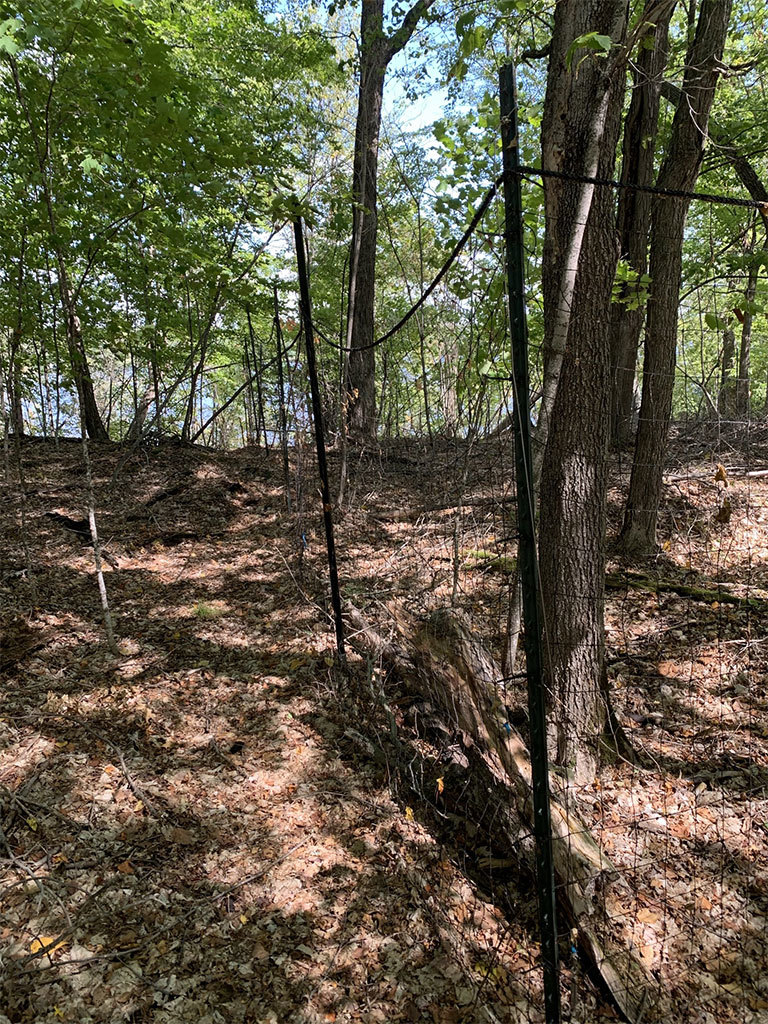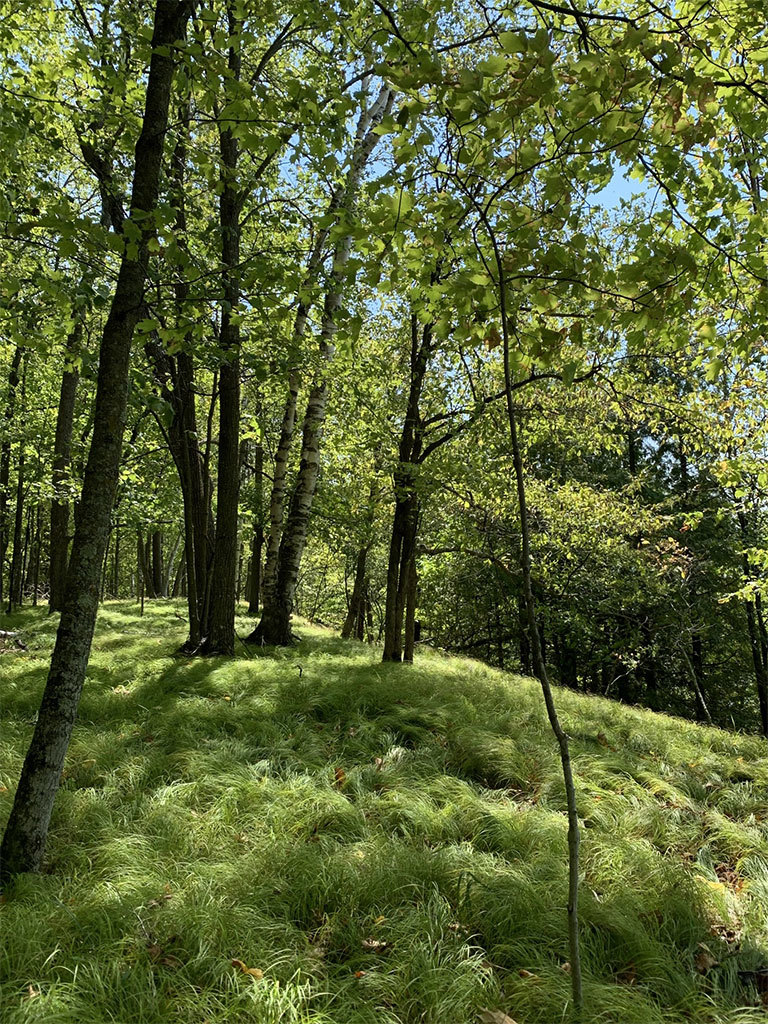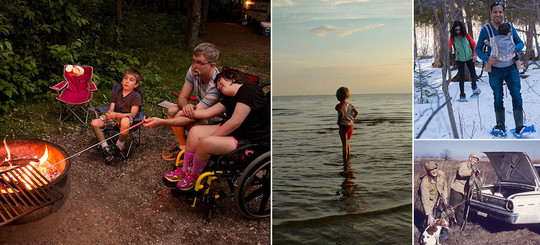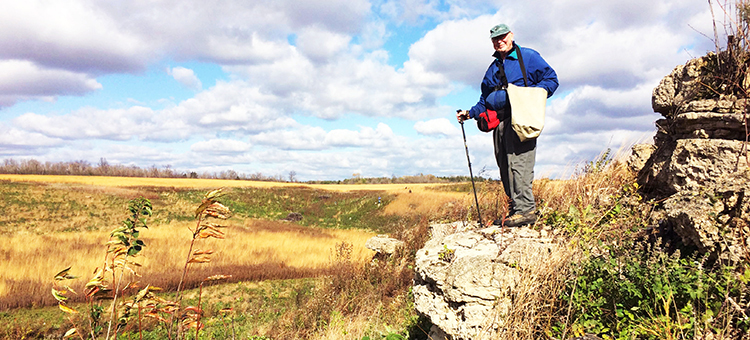
Site Highlight: Chisholm Point Island SNA
AmberBeth VanNingen, Northeast Regional Specialist
|
|
Dedication: Chisholm Point Island SNA was established through the hard work of many in the area, including longtime advocate Randy McCarty. Randy lived across from the SNA and faithfully served as its volunteer site steward from 2003 until 2019. Randy passed away in 2020. The conservation community greatly misses his dedication, generosity, and general good nature. Randy would have been thrilled with the discoveries detailed below.
|
Scientific and Natural Areas are, in large part, known for protecting rare species and their habitats in Minnesota. With the completion of the Minnesota Biological Survey’s (MBS) statewide diversity assessment, it would be tempting to think all the rare species and habitat there is to find have been found. But natural areas don’t know that and still hold surprises, as SNA staff in the northeast discovered.
Chisholm Point Island SNA is a 28-acre island in Pokegama Lake near Grand Rapids. It was designated in 2002 through the efforts of the Greater Pokegama Lake Association. The site protects an old-growth northern maple-basswood forest with sugar maples over 200 years old. An interesting feature of the forest was the presence of Canada yew (Taxus canadensis), an uncommon shrub of high-quality hardwood forests in eastern Minnesota. “Was” is the key word, as the yew population on the island plummeted as deer populations increased over the last several years. To protect the yew and forest understory, archery deer hunting was added to the SNA’s allowed activities in 2006 and nylon exclosure fences were built in 2007 around the remaining yew clusters.
 Nylon exclosure fence on Chisholm Point Island SNA. Photo by Kelly Randall.
It was the monitoring and repair of these fences that brought SNA Regional Naturalist Arika McGraw and Regional SNA Specialist AmberBeth VanNingen to the island in 2020. They found two of the five fences to be so damaged (mostly fallen trees and branches) that they weren’t doing their job anymore and needed to be removed. Volunteer site steward Hans Kaldahl finished removing the two fences in the summer of 2021. That summer, Arika also surveyed the plant communities on the island. In addition to traditional naturalist duties of public outreach and programming, part of her job involves monitoring management, rare features, and site conditions on northeastern SNAs. SNA staff were curious about how effective the remaining fences would be and the condition of the forest on the site. The forest understory has been greatly affected by deer browse and non-native earthworms. As such, Pennsylvania sedge (Carex pensylvanica) dominates in many areas and biodiversity can be low. In short, it’s the last place you’d expect to find a state-listed rare species.
 Pennsylvania sedge-covered knoll at the SNA. Note the lack biodiversity (no shrubs or wildflowers) in the understory. Photo by Kelly Randall.
As it happens, Arika and AmberBeth had just had the opportunity to visit another hardwood forest with fellow DNR staff a few weeks before. This site in Pine County is locally known for its salamander and fern populations and they got top-notch, hands-on training on fern identification. So, when Arika came across a small, unassuming fern at Chisholm Point Island, she knew it was likely something special. She took photos, checked with MBS staff, and sure enough, she had located the first recorded state-listed plant at this SNA! Arika, AmberBeth, and MBS ecologist Rebecca Holmstrom and her intern returned to the island in 2022 to better document the extent of this and related species. The data from these surveys are being processed and will help prioritize protection and management on the site.
Chisholm Point Island can only be reached from Pokegama Lake. The nearest public water access is located at Golf Course Road, approximately a half mile southeast of the SNA. The best landing areas are on the sandy shores of the southern tip or in the middle “saddle” of the island. Beware! Both areas harbor western poison ivy (Toxicodendron rydbergii). Access in the winter might include snowshoe, ski, or snowmobile, but note motorized vehicles are not allowed on the SNA. Deer hunting by archery is only allowed during the regular season to control deer populations.
Because of the sensitive nature of state-listed rare species on such a small island, their exact identity and location are protected and not named in this article.
Back to top

Staff Highlight: Matt Johnson
Since January 2023, Matt Johnson has been working through the Conservation Corps of Minnesota & Iowa program, serving as the Communications Outreach Specialist for the SNA Program. His primary focus is on social media marketing and content creation (writing, photography, etc.)
 Photo courtesy of Matt Johnson
What is the best part about your job (and why)?
Working through the Conservation Corps of Minnesota & Iowa, I am serving as the Communications Outreach Specialist for the SNA Program. I primarily focus on social media marketing and content creation (writing, photography, etc.)
What gets you excited about your work (and why)?
The most exciting part of my work is the variety. While on the surface, it may seem like my job is rather structured, there are always new twists and turns that keep it interesting. When it comes to working with social media, there are constantly new events to promote and interesting things to highlight. I also enjoy looking at the analytics for the posts in order to find out what kind of content the audience likes, in order to tailor future posts to their tastes. When it comes to my other tasks, such as content creation, I simply enjoy working within a variety of mediums; writing, editing, and photography are all interests of mine, so it is really exciting that I get to do them all to varying degrees.
What is your favorite way to spend time outdoors (and why)?
Growing up, I spent quite a bit of time outdoors. I have memories of my family taking camping trips, going fishing, and generally just playing with neighborhood friends outside. As I grew up, I admittedly become less outdoorsy, but I still always enjoy taking long walks or riding my bike. I have found that those activities, in addition to being physically healthy, are also great for my mental health. There is just something so refreshing about being outside.
Back to top
4 The Outdoors
4 The Outdoors is a shared vision for funding the future of outdoor recreation and conservation in Minnesota. You can help by talking to your friends, family, and DNR and elected officials about what you love in Minnesota’s natural places and why stable funding for these resources is important to you.
 Back to top
Research Roundup

Scientific research is encouraged on SNAs to advance the knowledge of natural systems. Each year the Scientific and Natural Areas Program reviews between 60 to 75 applications for research and other activities needing a special permit, most of which are permitted after review by SNA management staff at a local and statewide level. Some applications are also reviewed by Minnesota State Parks and Trails and The Nature Conservancy. So far in 2023, 23 applications have been reviewed, including a handful of special use permits such as piping plover nest protection and a permit that covers naturalist activities on SNAs. Projects that have been issued a permit this year include:
- Assessing a New Tool for Early Detection of Endangered Turtles on Proposed Transportation Projects (eDNA detection for endangered species). Research institution: University of Illinois Urbana-Champaign
- LiDAR Plot Based Inventory (ground truthing of recently collected high density LiDAR). Research institution: MN DNR Resource Assessment
- Soil Health Benefits of the Conservation Reserve Program. Research institution: University of North Dakota
New proposals are welcomed year-round, and the SNA Program encourages researchers, including university professors and independent scientists, as well as undergraduate and graduate students, to apply early. An application this spring for work proposed for 2023 should be sent in right away, to provide time for review and any needed follow-up before the busy filed season begins. All researchers must submit a completed research application. Please note review of application may take 30 days or more.
Back to top
Notes from Site Stewards
Site stewards monitor SNAs across Minnesota. Their observations provide valuable information to the SNA Program. From the reports below it appears January was a good month for hearty stewards to get out to sites and make some observations!
- At Hemlock Ravine SNA, site steward Jerry Zimny spent time in late January making minor repairs to the deer exclosure (tall fence) that helps protect the young hemlock trees at this SNA. He noted “with the snow being two - three feet deep, the small trees are covered and protected from predators.”
- On January 8 Julie Snartland, site steward at Quarry Park SNA, reported a few intrepid skiers had skied all of the trails in the SNA. Quarry Park is one of the few SNAs that have trails, which connect to the adjacent Stearns County Quarry Park and Nature Preserve.
-
Martha McPheeters, trekked into Kawishiwi Pines SNA on January 2 which is no small feat as it’s few miles from the nearest road into the site. Martha got a wintery photo of the broken wood-routed entry sign draped in snow. A new sign has been order and SNA staff are planning to replace it this year.
 Kawishiwi Pines SNA’s broken wood-routed entry sign. Photo by Martha McPheeters.
Back to top

SNA Events
Looking for a fun way to give back this spring? Get out and help on stewardship projects on an SNA at one of these events. A full up-to-date list can be found on the SNA events calendar.

03/25/2023 March Stewardship Project Lost Valley Prairie SNA
04/22/2023 April Stewardship Project Lost Valley Prairie SNA
05/20/2023 May Stewardship Project Lost Valley Prairie SNA
06/04/2023 Buckthorn Pull Moose Mountain SNA
06/10/2023 Sumac Removal Grey Cloud Dunes SNA
|